NOTE ON NOMENCLATURE
The German Navy bore the title Reichsmarine during the period of the Weimar Republic (1919-33) and for the first two and a half years of the National Socialist period (January 1933-May 1935). Thereafter it bore the title Kriegsmarine. From 1935, ships were titled Kriegsmarineschiff (KMS), e.g. KMS Deutschland.
Abbreviations used in this article are AA (antiaircraft gun) and HA (high-angle antiaircraft gun).
The military provisions of the Treaty of Versailles mandated a drastic reduction of Germany’s navy. All its modern capital ships, cruisers, destroyers, and submarines were to be discarded. Submarines and naval aircraft were prohibited. The size of the Reichsmarine, as the navy of the Weimar Republic was titled, was set at eight old pre-dreadnought battleships and eight old light cruisers (two of each in reserve), plus sixteen destroyers and sixteen seagoing torpedo boats (four of each in reserve). Manpower was limited to 15,000 officers and men.
Construction of one-for-one replacements of the battleships was prohibited for a ten-year period, and new warships could be no larger than 10,000 tons displacement, with a main armament no larger than 280mm (11in). These restrictions were designed to ensure that Germany could build nothing larger than a coast defense battleship resembling the Swedish Navy’s “Sverige” class, which displaced 7,125 tons, was armed with 4 x 11in and 6 x 6in guns, and had a maximum speed of 22 knots.
The ten-year prohibition on battleship construction expired in 1929, by which time only six of the original eight battleships remained operational. But the question of replacement ships was politically controversial, the Left proclaiming: “Food for our children, not armored cruisers!” Nevertheless, the first of a projected five replacement ships was laid down in May 1929. She was given the name Deutschland, and the details of her design caused a sensation.
It turned out that the authors of the 1919 peace treaty’s naval provisions had failed to allow for innovations in naval architecture, such as the weight savings made possible by electrically welded hulls, and diesel propulsion. Deutschland, which the Germans classified as a Panzerschiff (armored ship), was nothing like a coast defense battleship. Displacing 11,700 tons, she was propelled by eight diesel engines for a maximum speed of 28 knots and an exceptionally wide radius of action.
As completed, Deutschland and her sisters were armed with 6 x 11in guns (two triple turrets), 8 x 5.9in guns (single mounts), 6 x 3.5in HA guns (single mounts), and 8 x 21in torpedo tubes (two quadruple mounts). Light AA consisted of 8 x 37mm guns (four twin mounts) and 6 x 20mm guns (single mounts). Two aircraft could be carried.

The Germans had in fact produced a long-range commerce-raiding cruiser, fast enough to outrun most ships that outgunned her, and powerful enough to destroy any ship capable of catching her. The Royal Navy, which relied on its cruisers for commerce protection, had only three ships, the battlecruisers Repulse, Renown, and Hood, which were both faster and more heavily armed than this pocket battleship, as Deutschland was nicknamed. Assuming that all five of the Panzerschiffe were built, the RN would be hard pressed to counter them.
The quandary in which the RN thus found itself originated in the provisions of the 1922 Washington Naval Treaty, by which the major naval powers agreed to impose various limitations on their fleets. For cruisers, maximum displacement was set at 10,000 tons and maximum caliber of main armament at 8in. When Britain resumed cruiser construction from 1924 onward, heavy cruisers conformed to the treaty limits, while light cruisers were armed with 6in guns—insufficient to counter the German pocket battleships.
Though some naval experts criticized the pocket battleships as being over-gunned for their size and too thinly armored, they proved successful in service. In the spring of 1935, Deutschland undertook a long Atlantic cruise: 12,286 nautical miles in 32 days. This worked out to an average of 384 nautical miles per day at an average speed of 16 knots. Her captain reported that the ship’s machinery had performed well, that her habitability and sea-keeping qualities were excellent, and that she would prove to be a highly effective commerce raider.
Deutschland was followed into service by Admiral Scheer in 1934 and Admiral Graf Spee in 1936. Though all had the same basic characteristics, they were not identical. The main visible differences involved the bridge and forward superstructure. Graf Spee was lost early in the war. This setback that caused Hitler to order that Deutschland should be renamed Lützow, to avoid the embarrassment of losing a warship bearing the name of the nation. The two surviving ships were modified during the war. In 1940, the obsolete 3.5in HA guns were replaced by 6 x 4.1in HA guns (three twin mounts). Both later received radar, improved rangefinders, and a more up-to-date light AA armament.
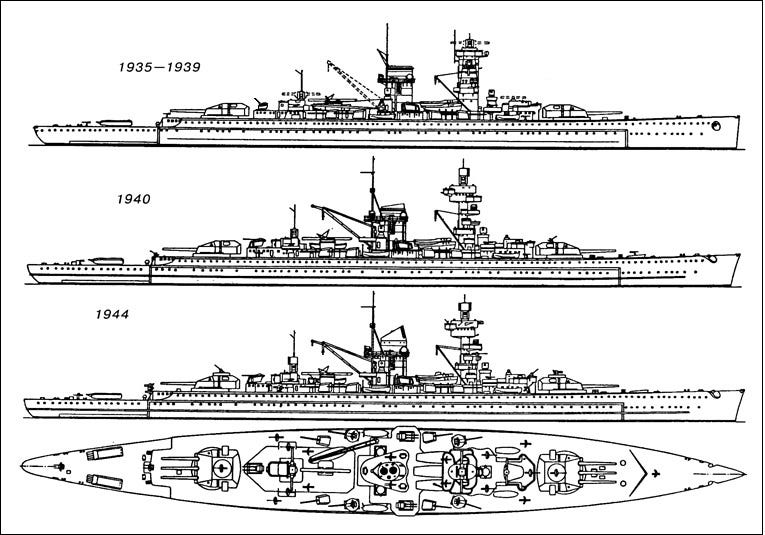
All three pocket battleships proved successful as commerce raiders. Deutschland sank 6,962 tons of Allied shipping, Admiral Scheer sank 137,223 tons, and Admiral Graf Spee sank 50,089 tons on her first and only cruise. The two surviving ships were reclassified as heavy cruisers in early 1940.
Lützow participated in Operation Weserübung, the invasion of Norway, in April 1940. During that operation she was damaged by Norwegian coastal artillery, then torpedoed by a British submarine while returning to Germany. For nearly a year after that she was out of service, under repair. In March 1941 she returned to service and was dispatched on a commerce-raiding cruise that had to be cancelled when she was again torpedoed by a British submarine while on passage to the Atlantic. After repairs she was sent to Norway as part of the “fleet in being,” but in late 1943 she was sent back to Germany for a refit, after which she served in the Baltic as a training ship until October 1944, when she returned to front-line service, conducting numerous shore bombardments in support of the German Army along the Baltic coast. In April 1945 Lützow was bombed and sunk in shallow water by RAF bombers. She remained in action as a stationary gun battery until the end of the war. The wreck was raised by the Soviet Navy in 1947 and expended as a target.
Admiral Sheer’s later career was similar to Lützow’s. Recalled from Norway in late 1943, she served in the Baltic as a training ship and bombardment vessel. While under repair at the naval base of Kiel in March 1945, she too was bombed and sunk by RAF bombers.
The fourth and fifth units of the class were never built, being replaced in the prewar construction program by two much larger ships, which became the battleships Scharnhorst and Gneisenau.
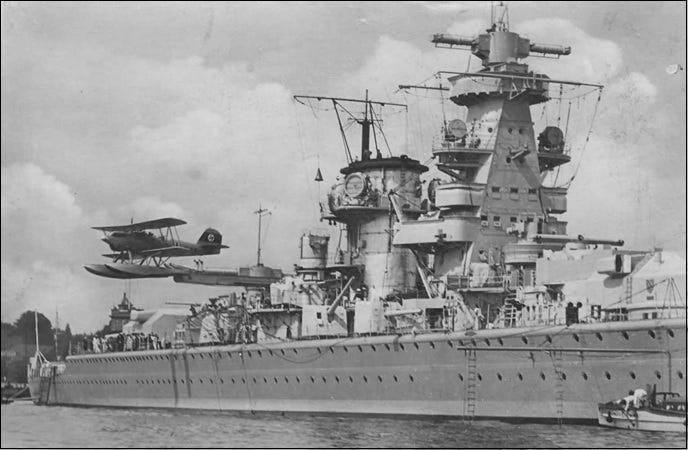




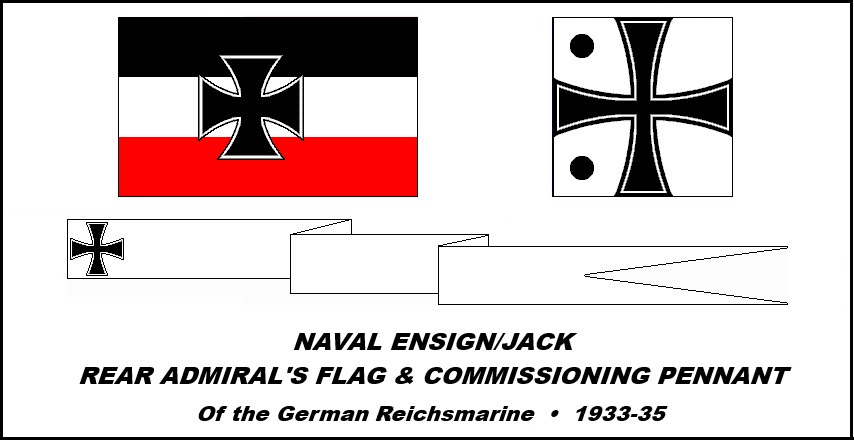
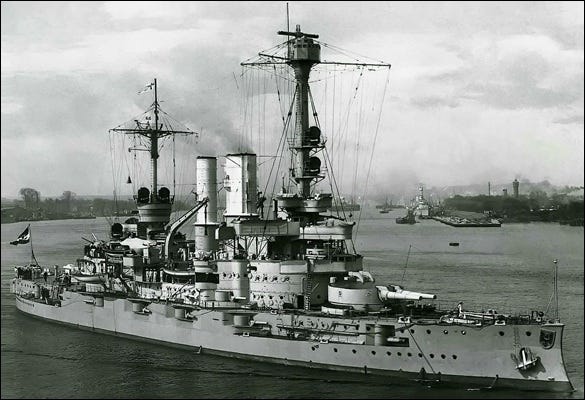
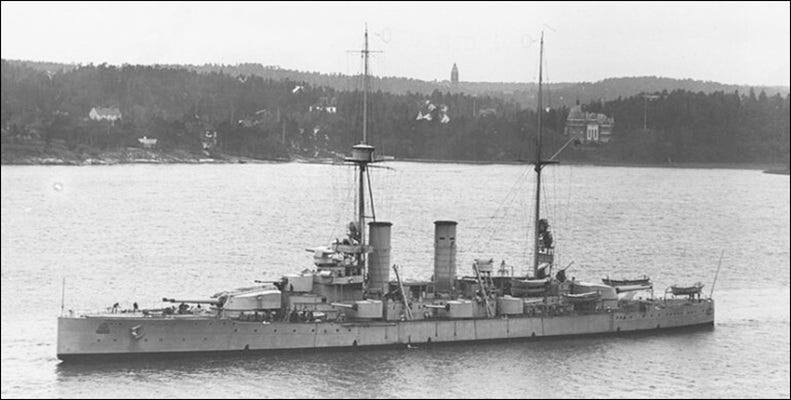
Their fire control systems were also more advanced. Given that they were always outnumbered, many questions have to be asked of the Royal Navy, and not just of its tech at the time.
Makes you wonder what innovations the Russians (and therefore Chinese, who in much miltech are more advanced because they simply steal US miltech, and have invested in their own innovations) have up their sleeves.